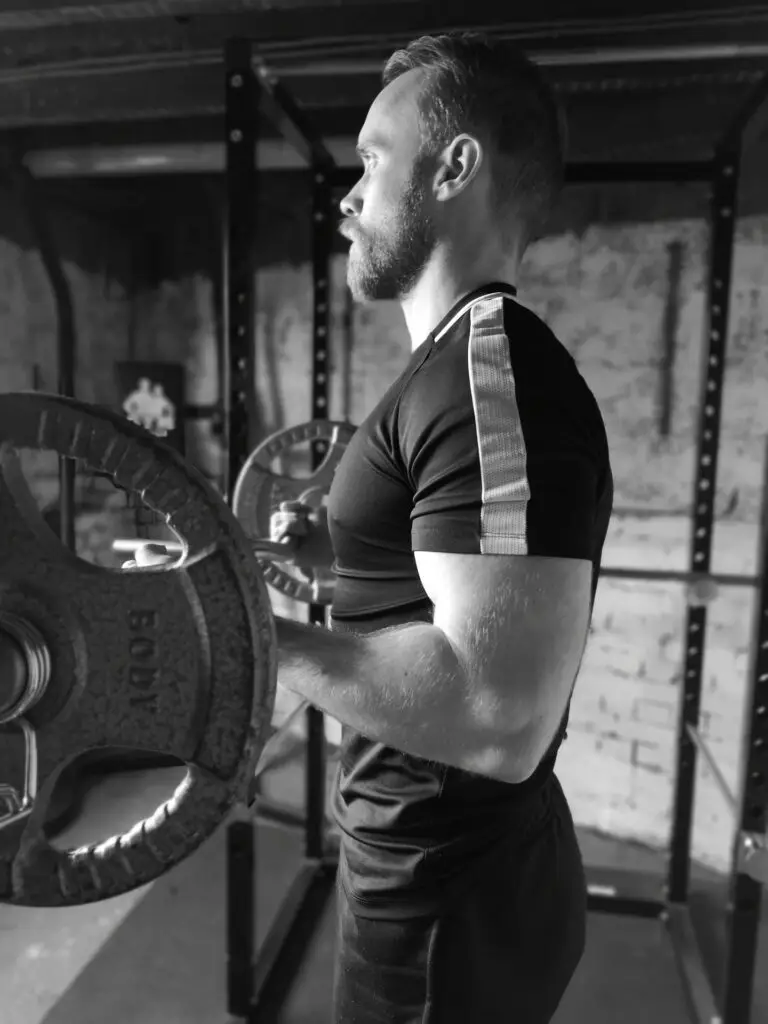Sleeping can be a pain in the you-know-what if you’ve got biceps tendonitis. It can often feel dull, achy, and even sharp at times if you move in the “wrong,” way. The purpose of each of these tips is to help reduce symptoms.
Here is how to get better sleep:
- Sleeping on your back. Place a small pillow under your shoulder and arm to cradle the arm.
- Sleeping on your side. Hug a pillow with the affected arm (on top).
- Sleeping on your stomach. Hug a pillow or prop your shoulder up slightly with a pillow with your arm by your side.
- Do your rehab exercises before you sleep.
- Take an anti-inflammatory medication (if permitted by your doctor.)

In the remainder of this article, I’m going to explain these tips in more detail.
Tip #1. Sleep On Your Back With Pillow To Support The Shoulder
What this is doing, is it’s lifting the shoulder up slightly, putting slack into the bicep tendon (at the shoulder), and sometimes this is able to reduce symptoms or at the very least make it more comfortable to sleep.
Tip #2. Sleeping On Your Side
With this one, you’ll want to hug your pillow with your top arm (affected arm). It’s not against the rules to lie on the shoulder that’s hurting however most people don’t tolerate this too well.
Tip #3. Sleeping On Your Stomach
There is nothing wrong with sleeping on your stomach. For some people, and you might be one of them, it’s the only position you get really good sleep in. For others, you might always feel like it’s bothersome to your neck or shoulder.
In any case, for this one, you can do it in a couple of different ways.
The first method is to just hug a pillow, which, you might already know and be doing intuitively.
The second method is to place the affected arm down by your side and prop up the front of the shoulder with a small pillow or rolled-up towel. This gives extra support to the shoulder and can sometimes help with symptoms.
Tip #4. Do Your Rehab Exercises Before You Sleep

This is one you might have missed. It’s important to load the bicep tendon (using weights), to help it heal most effectively and prevent things like this from happening again.
A great way to start feeling better before bed is to do a few sets of bicep curls or other exercises that you’re trying out for your bicep. Often times this will warm up the bicep muscle and tendon and symptoms will be lower as you are crawling into bed.
For more exercise ideas for biceps tendonitis and whether or not lifting weights is good for biceps tendonitis, check out this article I wrote about that.
Tip #5. Take Anti-Inflammatory Medications (if approved by your doctor)
I can’t tell you which NSAIDs (non-steroidal anti-inflammatory medications) to take as I’m not your doctor, however, NSAIDs can be helpful to control symptoms associated with biceps tendonitis.

I’d highly recommend chatting with your doctor about these over-the-counter drugs to help manage symptoms in the short term.
Key Takeaways:
- Use pillows to prop your shoulder up in different ways. Keep testing out different positions to see which one works best for you.
- Exercise the bicep before bed if that helps with symptoms.
- Take medication to calm down inflammation.
- Bonus: Use ice/heat to control symptoms prior to sleeping.
